-
About
- About Listly
- Community & Support
- Howto
- Chrome Extension
- Bookmarklet
- WordPress Plugin
- Listly Premium
- Privacy
- Terms
- DMCA Copyright
- © 2010-2025 Boomy Labs


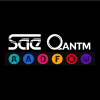 SAE Australia
SAE Australia
Listly by SAE Australia
Technology Knowledge (TK) – Knowledge about certain ways of thinking about, and working with technology, tools and resources. and working with technology can apply to all technology tools and resources. This includes understanding information technology broadly enough to apply it productively at work and in everyday life, being able to recognize when information technology can assist or impede the achievement of a goal, and being able continually adapt to changes in information technology (Koehler & Mishra, 2009).

This Lynda.com video series with Kevin Kelly looks at how to integrate technology into an educational activity, module or class. It investigates strategies in three core areas of instruction. One, using technology to find, create and share instructional materials and resources with students. Two, using technology to facilitate in-class and virtual activities. And three, using technology to assess learning and teaching in and out of the classroom.

This post is about embedding your curated content in a Moodle using four of my favourite services: Twitter, Pinterest, Youtube and Storify. With these tools you can easily transform your Moodle module into a dynamic and engaging learning space that can captivate students and increase their online engagement.

Prezi is an alternative to powerpoint. This set of video tutorials show what Prezi brings to the table is the freedom to move outside a strictly linear presentation style. If you've ever seen a Prezi before you've probably noticed it's ability to zoom and rotate in and out of content, which can be a great way to grab and keep your audience's attention, but beyond the cool flashiness of movement, Prezi really excels in providing you a way to bring a big picture perspective to your presentation. It allows to tell your story in a compelling visual way that lets your audience see all the pieces of the story at once, while at the same time letting you drill down to the important details.
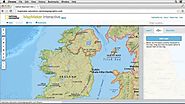
Using the Flipped Classroom is an excellent way to integrate Campus Online learning resources for students prior to class, so classroom time can be devoted to the mastery of content. This strategy encourages students to become independent learners. As in P03 above, this resource focuses on active learning in the class. The set of video tutorials from Lynda.com also focus on how technology can help teachers improve students' learning and become masterful. The flipped classroom is simply an ideology that allows us to utilize a lot of educational technologies to help push student achievement. It helps students become active instead of passive learners.

Recently I shared lunch with colleague and friend, Mike Gwaltney. He teaches in a variety of blending settings both in class and online. We got into an interesting discussion about ways to deliver instructional content and learning process both in and outside the classroom. The conversation quickly turned to the notion of "flipping the classroom." This is the idea that teachers shoot videos of their lessons, then make them available online for students to view at home. Class time is then devoted to problem solving - with the teacher acting as a guide to teams of students. It's a great approach that flips the delivery of the lesson to homework - it's like a TiVo time shift that can reshape your classroom.
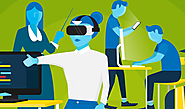
This research study investigated the use of technology tools to support constructivist learning experiences in a preservice teacher education reading methods course. Learning opportunities based on Kolb’s learning styles model were used to support understanding of course content in the constructivist environment. Technology tools were used during class presentations to communicate, scaffold, and clarify course concepts and content while engaging students with information. Technology was used outside of class as a collaboration tool in mediating and negotiating learning between the instructor and students as well as between students and students. In addition to demonstration and application of reading methods, students’ perceptions of their learning experience and understanding of course content were considered in analyzing the effectiveness of technology used to address multiple learning styles in a constructivist environment.
Solvie, P., & Kloek, M. (2007). Using technology tools to engage students with multiple learning styles in a constructivist learning environment. Contemporary Issues in Technology and Teacher Education [Online serial], 7(2). Retrieved from http://www.citejournal.org/volume-7/issue-2-07/english-language-arts/using-technology-tools-to-engage-students-with-multiple-learning-styles-in-a-constructivist-learning-environment
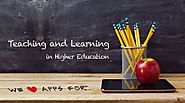
With the many 1000s of educational apps on the market, staying up-to-date with learning technologies can be a time consuming and bewildering process. So consider this list a tiny attempt at elevating some of the confusion surrounding teaching with technology for tertiary educators, particularly those working in the arts and humanities sector. All apps and services listed below are free to use or offer free versions with some user restrictions.
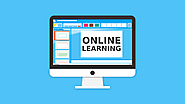
MethodSpace is a multidimensional online network for the community of researchers, from students to professors, engaged in research methods. Sponsored by SAGE Publishing, a leading publisher of books and journals in research methods, the site is created for students and researchers to network and share research, resources and debates. MethodSpace users have free access to selected journal articles, book chapters, etc which highlight emerging topics in the field.

Quality teaching is widely acknowledge as being a key determinant of variation in student achievement (Wenglinsky, 2000). Concomitantly, stud...